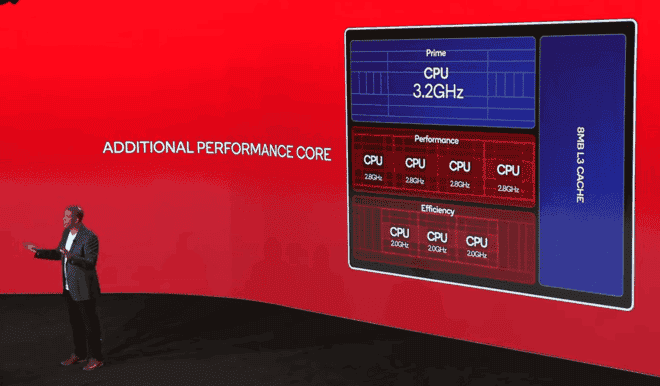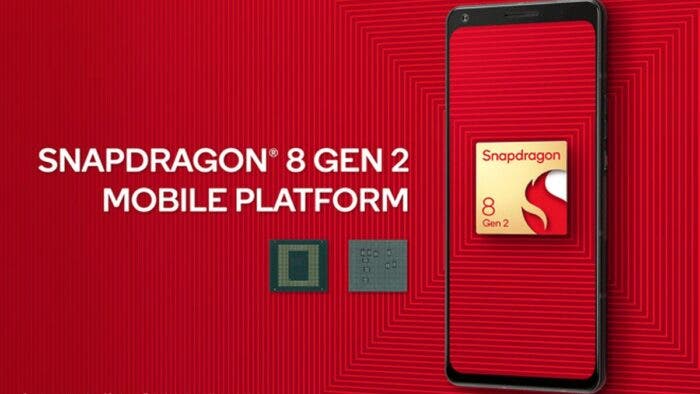Qualcomm is the “king” of flagship processors for Android smartphones. Although MediaTek has been putting up a good fight, it is still behind Qualcomm in the flagship market. Every year, we look forward to the launch of the new generation of Qualcomm’s Snapdragon flagship. A few hours ago, Qualcomm officially unveiled its new top chip for the next-gen Android flagship smartphones. This processor is the Qualcomm Snapdragon 8 Gen 2. We will see this flagship SoC in smartphones starting his year. The Samsung Galaxy S23 to arrive early next year will also use this chip. Among other things, this chip offers a number of upgrades. Most notable is the 35% increase in its CPU power.

The American chip giant wants to set new standards with the Snapdragon 8 Gen 2. This chip comes with the code name “Kailua” and the model number is SM8550. Qualcomm aims to grab the Android flagship market with this chip. The new system-on-chip offers a total of eight CPU cores. It also comes with a prime core based on the ARM Cortex-X3 architecture. This chip achieves a clock rate of up to 3.2 gigahertz.
Let us now take a look at the top 3 upgrades that this chip brings

Qualcomm Snapdragon 8 Gen 2 upgrades
1. Qualcomm now offers five instead of four high-performance CPU cores
There are two pairs of high-performance cores based on the Cortex-A710 and Cortex-A715 architectures. These cores clocks at a maximum of 2.8 gigahertz. It also comes with three energy-saving cores based on ARM Cortex-A510. These cores clocks a maximum of 2.0 gigahertz. Qualcomm is going head to head with its Taiwanese competitor MediaTek. Thus, it had to make changes to the cluster design of the CPU of its new chip. This is to secure the performance of this chip.
The usual and old design is the 4 + 3 + 1 design. This means four energy-saving cores, three high-performance cores and one prime core. The new Snapdragon 8 Gen 2 SoC uses a 3 + (2 + 2) + 1 design. Basically, the new chip has five instead of just four high-end cores. This should also be the reason why Qualcomm speaks of up to 35 per cent more CPU power. The first benchmarks of the Samsung Gaalxy S23 series actually reveals this new design.
Through further optimizations, Qualcomm also wants to have increased things by up to 40 per cent. The chip’s new Adreno 740 GPU is said to deliver up to 25 per cent more performance. However, this chip also works 45 per cent more efficiently according to the company. The new GPU also supports real-time ray tracing. This is the first time for a Qualcomm chip to offer realistic lighting effects and reflections in games. The real-time ray tracing is one of the selling points of the new chip.

2. High-end 5G modem & object recognition in the image processing processor
Another selling point of this chip is the new 5G modem. This chip integrates the Snapdragon X70 5G modem. This modem supports the use of two simultaneously active 5G SIMs. Thus, users can access two 5G networks at the same time if they need it. The modem also comes with the new Wi-Fi 7 standard as well as its own AI processor. This should ensure better reception and higher transmission rates.
The image processing processor of the Snapdragon 8 Gen 2 is referred to as the “Cognitive Image Signal Processor”. It should be able to use semantic segmentation to break down the motifs in photos and videos in order to then recognize certain objects in an image and then for an optimized display. Basically, the chip should be able to use optimal settings for faces, hair, sky and other things.
3. Better camera sensors
One aspect of the upgrade is the image preview. Users can see the final image or video even before the image processing software intervenes to optimize it. Qualcomm is also collaborating with Sony and Samsung. It wants to better match the image processing in the new Snapdragon SoC to the next generation of camera sensors from the two market leaders.
There is an interesting detail in terms of video recording and playback. Although the Snapdragon 8 Gen 2 can record videos with a maximum of 8K resolution, the chip can only operate internal and external displays with a maximum of 4K resolution. Other technical improvements include support for the even faster UFS 4.0 storage. It also supports the ability to spatially change the audio playback via headphones. It does this using the so-called spatial sound when the user turns their head.

It will probably only be a few days before the first devices based on the new Qualcomm Snapdragon 8 Gen 2 will arrive. Qualcomm itself only mentioned Motorola, Oppo and ASUS during the launch event. These companies are already planning the appropriate hardware. There is also Honor and other Chinese manufacturers battling to be the first to launch this chip.
TSMC ensures reliable availability
In addition to these upgrades, TSMC will also do its part in the process. The production of this new flagship processor uses TSMC’s 4nm manufacturing process. Having previously relied on Samsung as a manufacturing partner, Qualcomm falls back to TSMC’s 4nm node this time. Qualcomm is now completely switching back to TSMC. This is not only to ensure quality but also to ensure availability in sufficient quantities. Qualcomm has also done well in terms of AI performance and promises an increase by a factor of 4.35. Among other things, this should enable the new chip to carry out more complex tasks such as translation into several languages at the same time.





